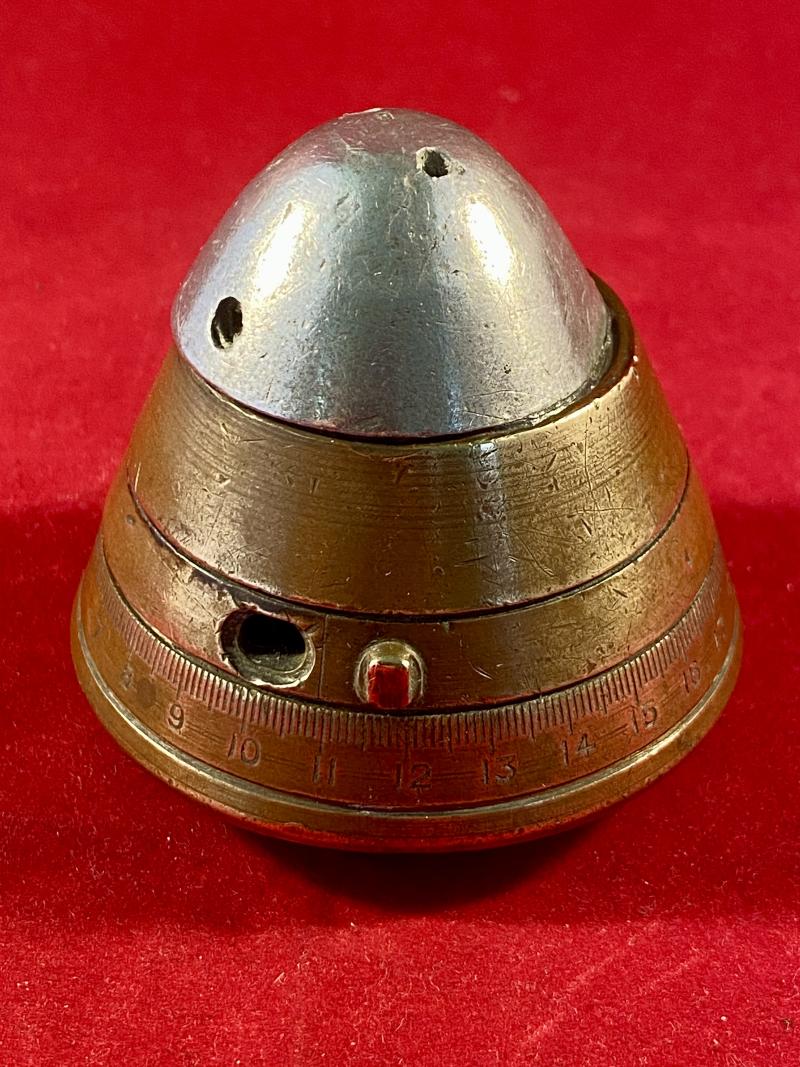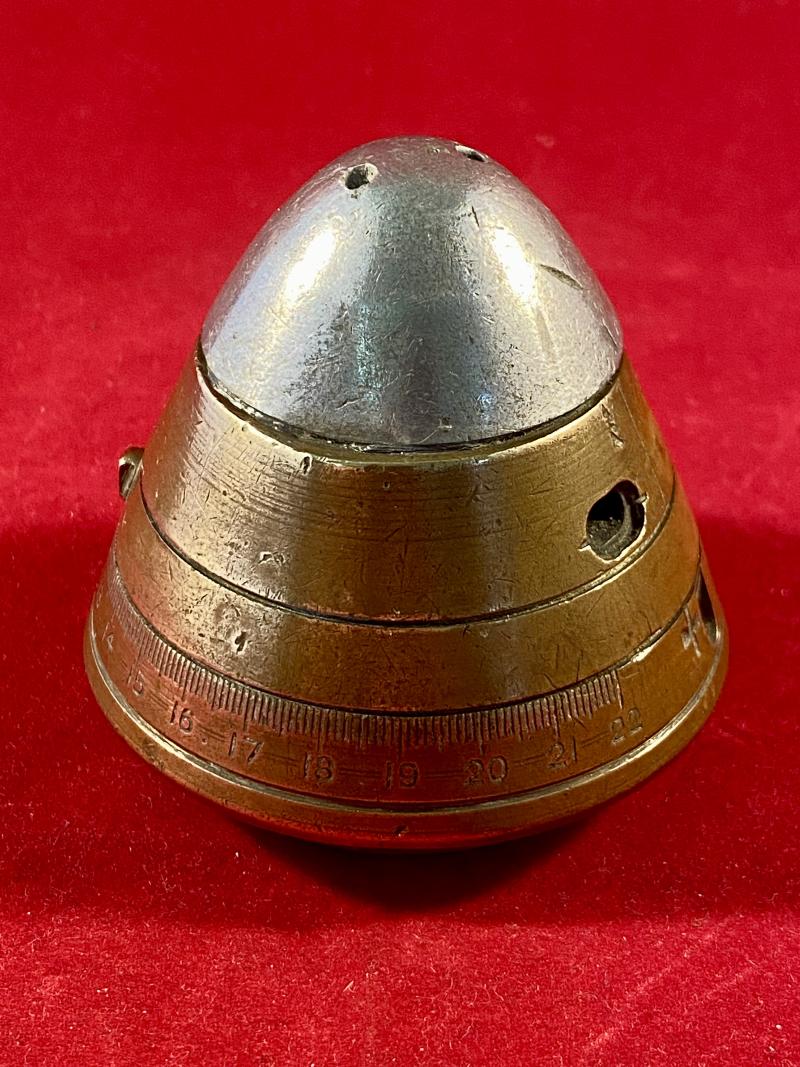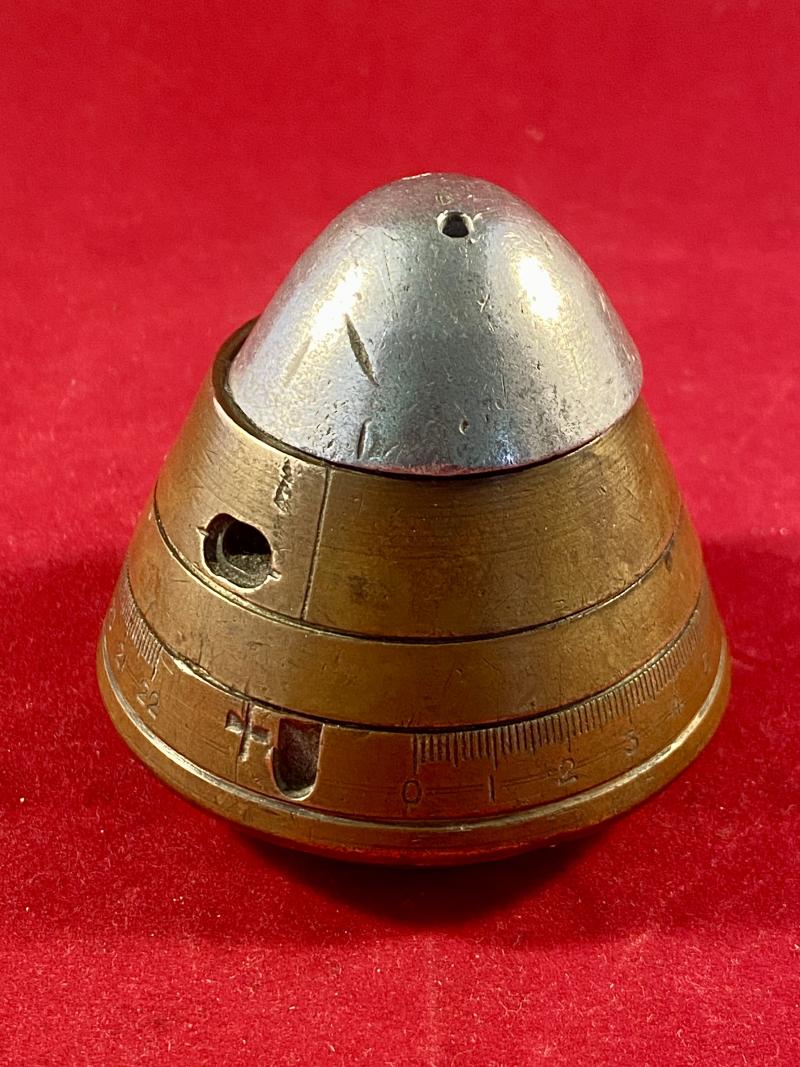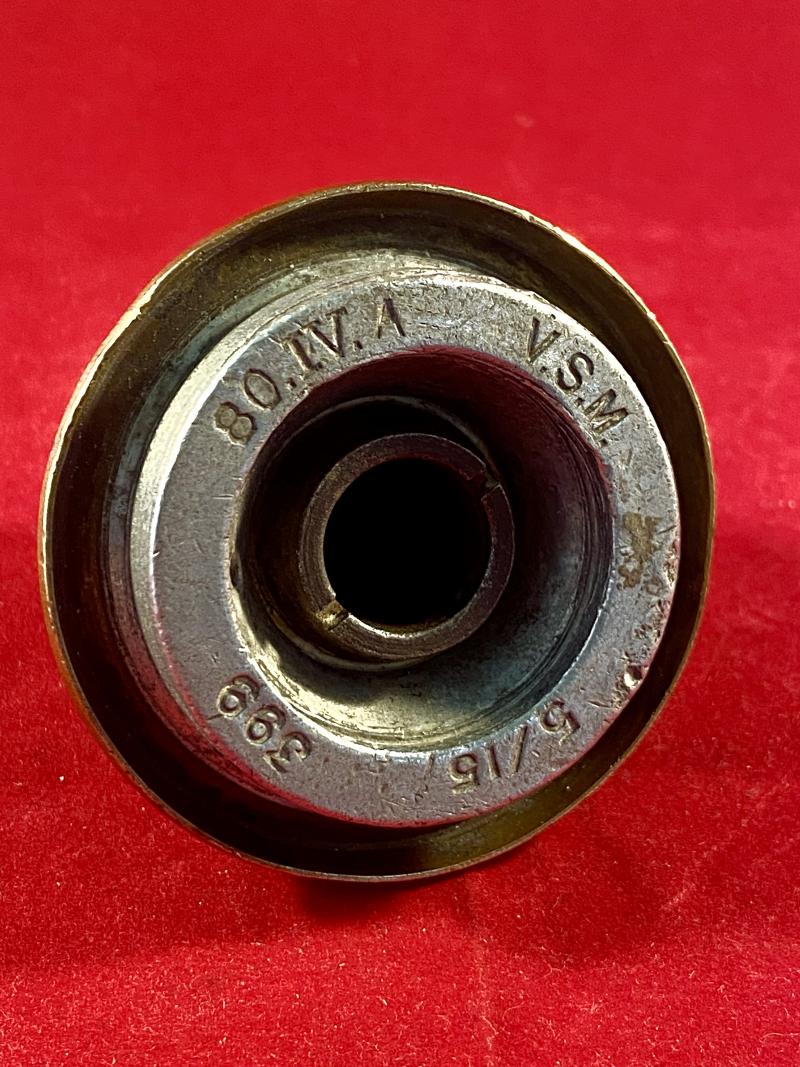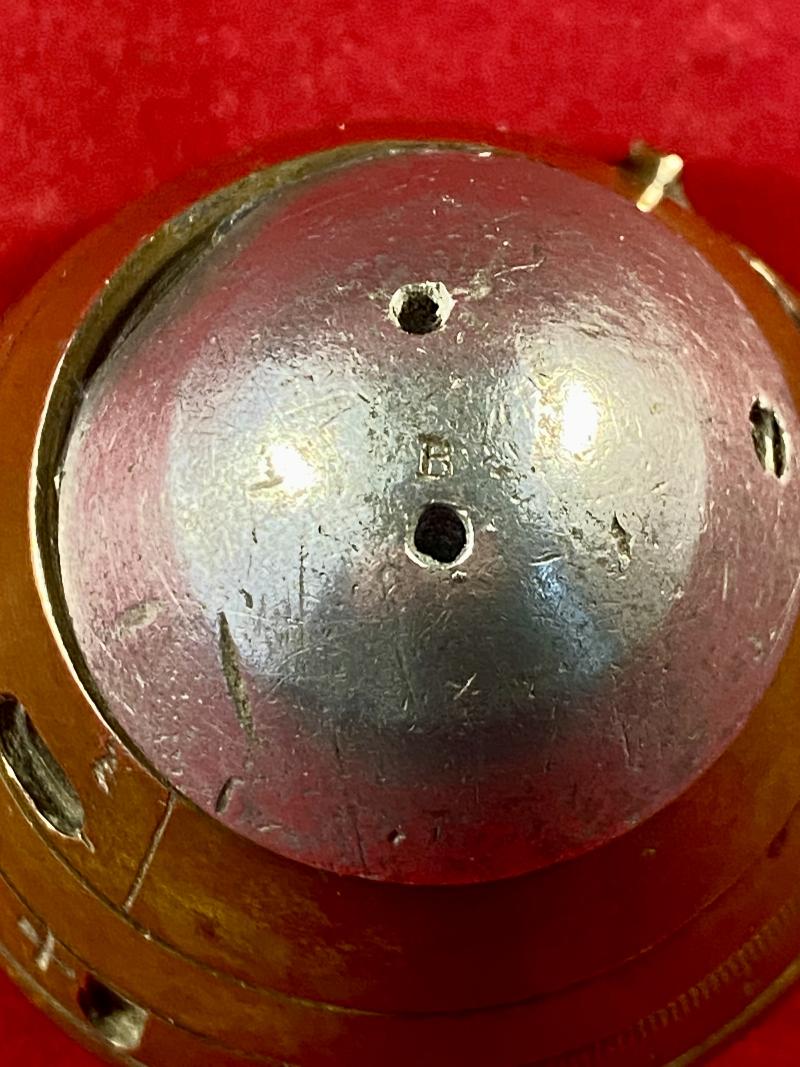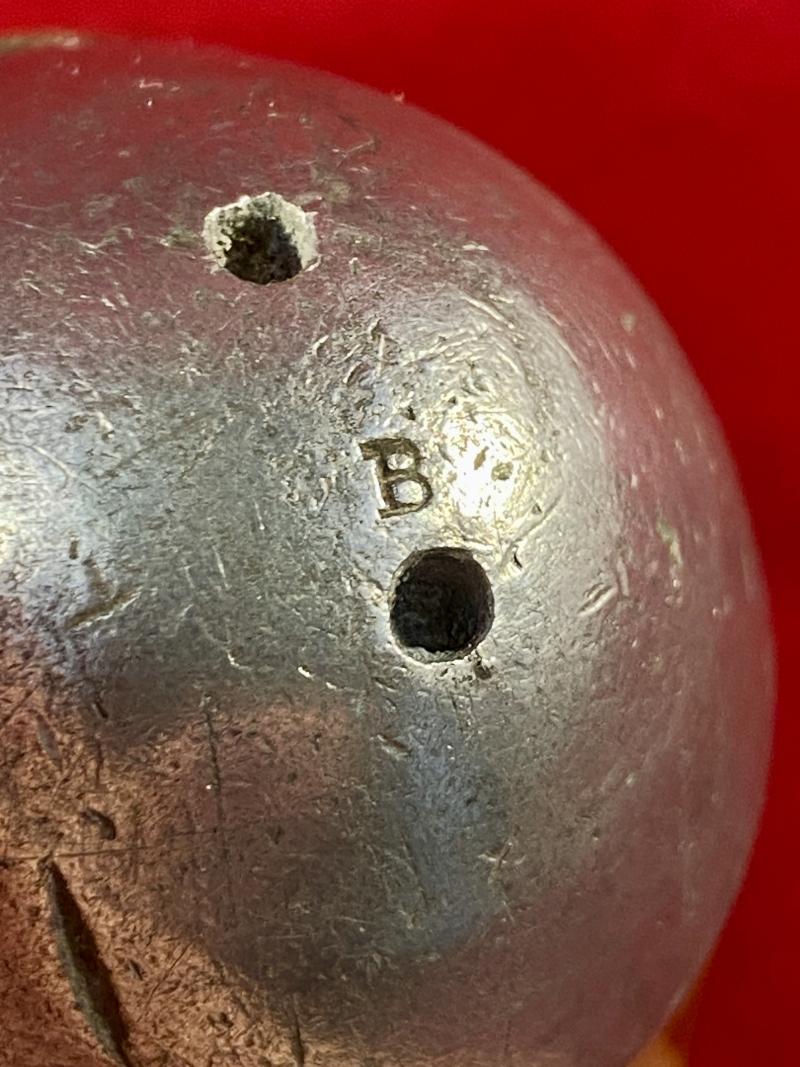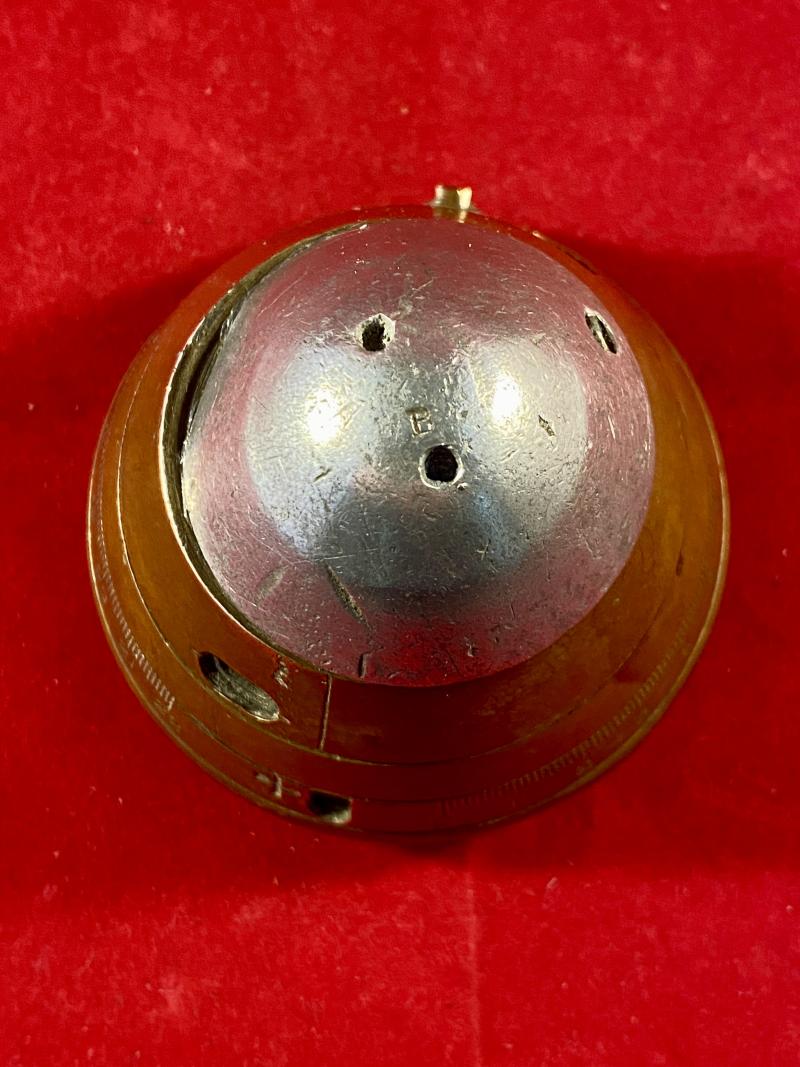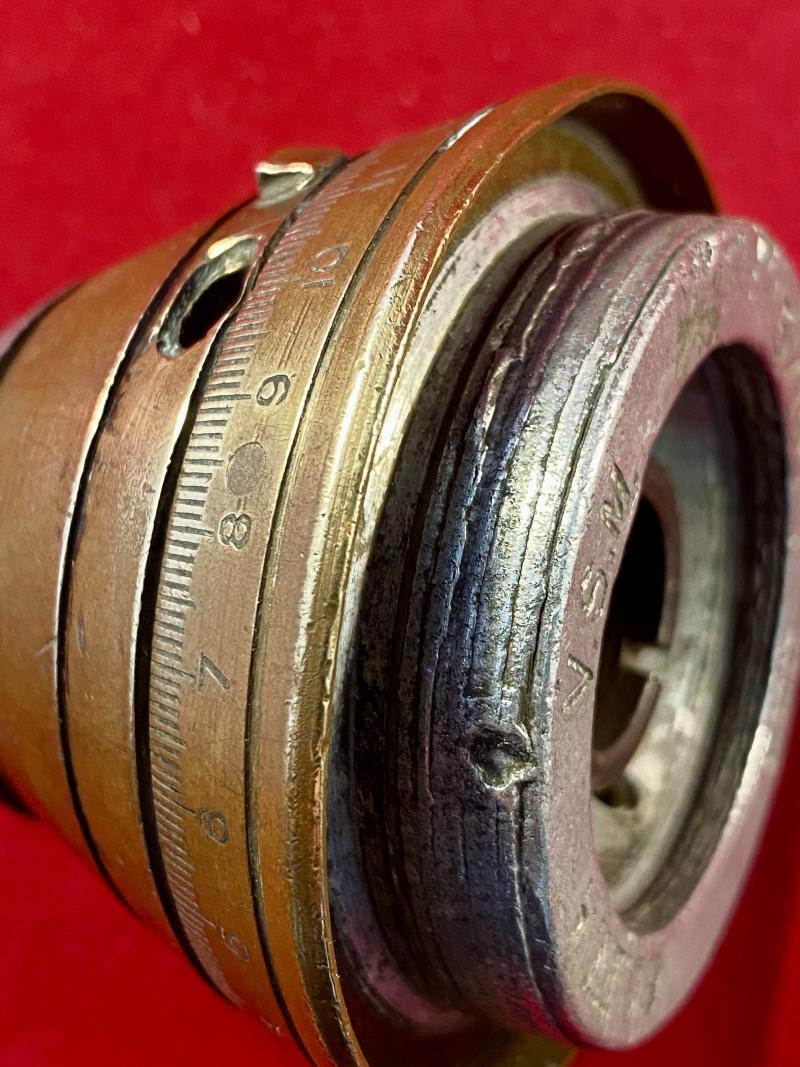INERT WW1 British No 80 IV.A Shrapnel Shell Brass Fuse Head dated 1915
Here on offer is a great example of an INERT WW1 British No 80 IV.A shrapnel shell fuse head, dated to May 1915.
This is an early version of this type of fuse, with an aluminium threaded base and top cone, that is stamped with a tiny letter “B”.
The fuse itself has been fired but is now INERT and was recovered from the battlefields of France. It shows signs of impact, with the nose cone now being slightly offset.
The No.80 fuse was known as a time and percussion fuse and was usually used with the British shrapnel shells of the famous 18 pounders field guns in WW1. Designed by the German company Krupp in 1905 and manufactured under license, by Vickers Armament Industries in England before and during WW1.
Although the initial models were made in aluminium, this fuse was entirely made in brass. The time system is a classical rotating disk system, with a ring graduated from 0 to 22 seconds, a departure ignition caused by an axial time pellet caused by the discharge shock momentum. The percussion system, selectable by choosing the rotating disk graduation marked with a roman cross was a very classical one as well, of graze type, with a staple safety device actioned by the shell departure shock.
A gunpowder load was placed at the base of the fuse to ignite the shell (with an additional detonator if needed).
This type of fuse had 16 different versions and remained in service until the middle of WW2.
This fuse has some small creases along the lower lip edge.
The aluminium base has No 80 IV.A stamped into it along with the maker mark, VSM (Vickers, Sons & Maxim), the date 5/18 and the number 399.
A nice early example that makes a great desk paperweight!
It measures 2.5” (6.4cm) diameter and is 2.4” (6cm) high from the treaded base to the top of the cone.
It weighs 380g.
Please see my pictures for the details of the condition, which complement this description.
Please see my TERMS OF BUSINESS regarding Deliver Charges and Insurance regarding additional insurance cover, should you require it, BEFORE the item is dispatched.
The responsibility lies with the customer to check with your Customs restrictions that this item can be imported into your country.
Code: 51292

